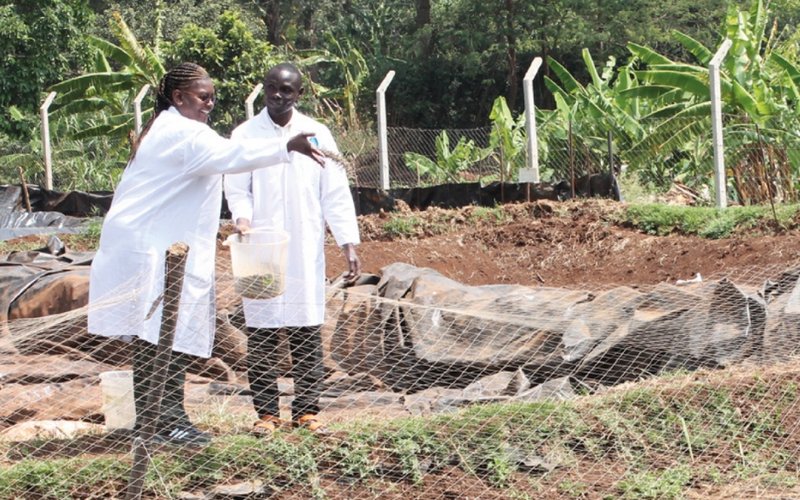Canada’s International Development Research Centre led a project to develop and test insect-based feeds for the sustainable, safe and cost-effective production of fish and poultry. In West and Central Africa, researchers have documented the use of termites, house flies and cockroaches in poultry feed, but little research has been done in Eastern Africa on the use of insects as an alternative protein source for livestock.
Working with private sector companies, the research team assessed the market potential for insect meal and insect-based feeds and analyzed the feeds’ performance in poultry and fish production. The project collaborated with the Kenya and Uganda Bureaus of Standards to develop regulations and standards for the use of insects in animal feeds.
Performance studies in catfish fingerlings revealed that a 37% higher growth rate and a 23% higher weight gain were achieved from BSF-based feed, compared to conventional feed. Nile tilapia fish fed with BSF-based feed were 23% heavier than those fed with conventional feed.
Ninety-two percent of the 28 profiled insect species have higher crude protein (dry matter (DM) basis) than fishmeal available in Kenya and Uganda. All of the species reared by the project were superior, including the African moth (Gonimbrasia zambesia), which has up to 73.3% crude protein (DM basis), field cricket (67.21%), house cricket (62.57%) and black soldier fly (49.5%). Insects are also high in polyunsaturated fatty acids, flavonoids, vitamins and minerals.
Aflatoxin and pesticide residues were not found in the 28 insect species analyzed. Pathogens (Escherichia coli, Salmonella typhi, Staphylococcus aureus and faecal coliforms) in reared black soldier flies (BSF), crickets and harvested blue caliphora flies were effectively inactivated by boiling or roasting for five minutes. Rearing protocols for 16 insect species were developed, the most productive colonies being BSF (Hermetia illucens), crickets (Acheta domesticus and Gryllus bimaculatus), locusts (Schistocerca gregaria), silkworms (Bombyx mori) and American cockroaches (Periplaneta americana).
In many sub-Saharan African countries, the poultry and fish industries are among the fastest-growing agribusinesses. However, poor availability and the low quality of feed, combined with the high cost of soybeans and cereals used as feed ingredients, are severely constraining growth in the sector. As a result of this project, Sanergy Ltd., one of the private sector partners involved in the project, is currently expanding its BSF production units with new investors joining the venture.












